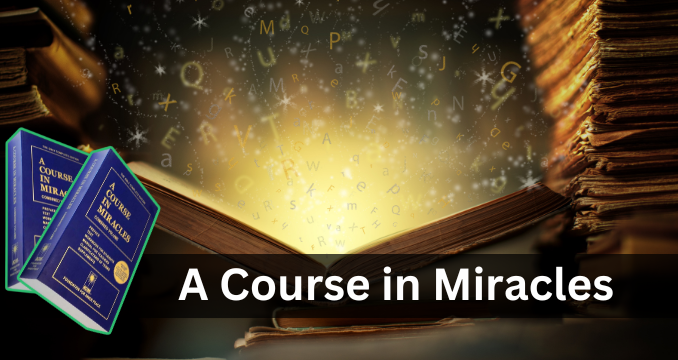
Introduction: In a world filled with uncertainty and challenges, the search for inner peace and purpose has been a timeless pursuit. Many individuals find solace in spiritual teachings that offer profound insights and practical guidance for navigating the complexities of life. One such beacon of wisdom is “A Course in Miracles” (ACIM), a unique and transformative course that has captivated hearts and minds for decades.
The Genesis of A Course in Miracles
Born out of a collaborative effort between two psychologists, Helen Schucman and William Thetford, “A Course in Miracles” first emerged in the 1970s. What makes ACIM stand out is its origin story. Schucman claimed to have received the content of the course through a process of inner dictation from a higher spiritual source, often identified as Jesus Christ. Thetford, her colleague, played a crucial role in supporting and transcribing the teachings.
The Core Teachings
At its core, ACIM offers a comprehensive spiritual framework that aims to guide individuals towards a profound shift in perception and understanding. The course consists of three main components:
- Text: The foundational teachings provide a theoretical framework that unravels the nature of reality, the self, and the world. It challenges conventional thought patterns and invites readers to examine their beliefs and perceptions.
- Workbook: This practical section comprises 365 daily lessons, each intended to shift the reader’s perception and foster a deeper connection to love and inner peace. The lessons are designed to be a transformative journey, guiding individuals to release fear, guilt, and negativity.
- Manual for Teachers: Intended for those who feel called to share the course’s teachings, this manual provides guidance on the role of a teacher of God and the process of forgiveness.
Key Themes
“A Course in Miracles” is rich in themes that resonate deeply with the human experience:
- Forgiveness: ACIM emphasizes forgiveness as a central tenet. It teaches that by releasing judgment and grievances, individuals can experience healing and liberation from emotional pain.
- Perception vs. Truth: The course challenges the illusion of the material world and encourages the recognition of a deeper spiritual reality beyond appearances.
- Love and Fear: ACIM teaches that love and fear are the fundamental emotions, and all other emotions stem from these two core states. Choosing love over fear is advocated as a path to inner peace.
- Miracles: The term “miracle” is redefined as a shift in perception from fear to love. It’s about seeing beyond the limitations of the ego and recognizing the inherent divinity in all beings.
Impact and Controversy
While “A Course in Miracles” has garnered a dedicated following. And countless success stories of personal transformation, it has also faced criticism and controversy. Some skeptics question its origin, labeling it as a form of automatic writing. While others debate its alignment with traditional religious beliefs.
Conclusion
“A Course in Miracles” stands as a powerful testament to the timeless quest for spiritual awakening and inner peace. Its teachings invite individuals to embark on a journey of self-discovery, forgiveness, and a profound shift in perception. Regardless of one’s beliefs or background, ACIM offers a thought-provoking exploration of the nature of reality and the human experience. Whether viewed as a spiritual guide, a philosophical treatise, or a path to enlightenment. ACIM continues to touch the lives of those who seek a deeper understanding of themselves and the world around them.
